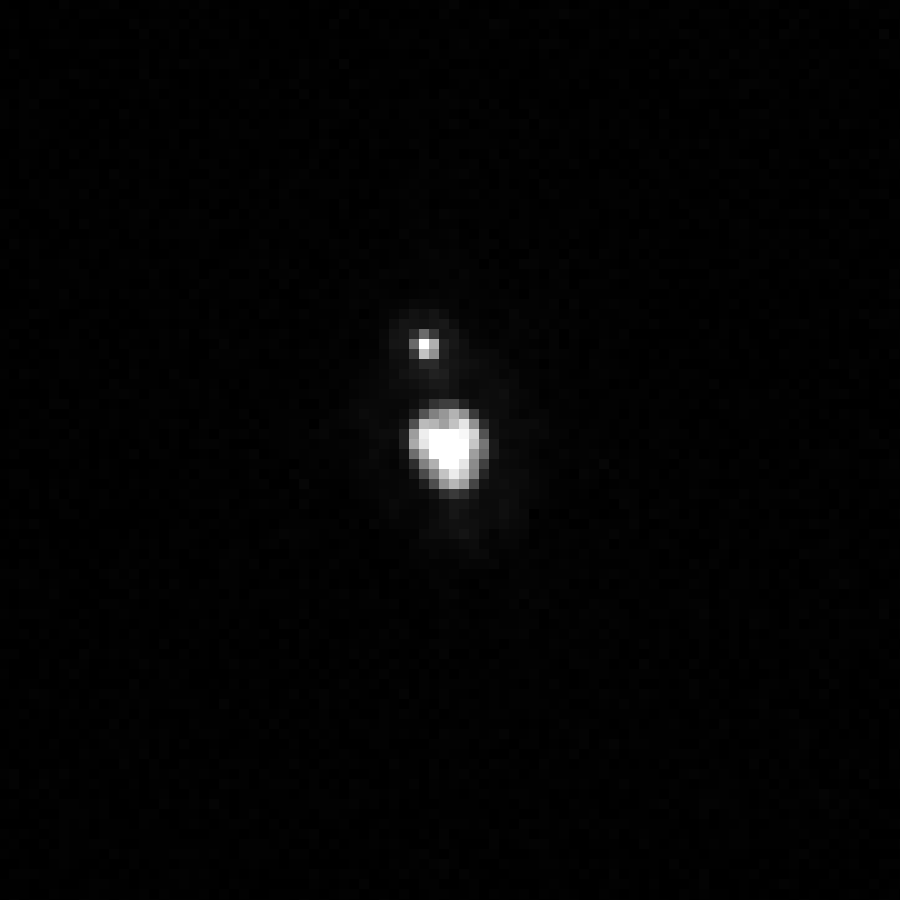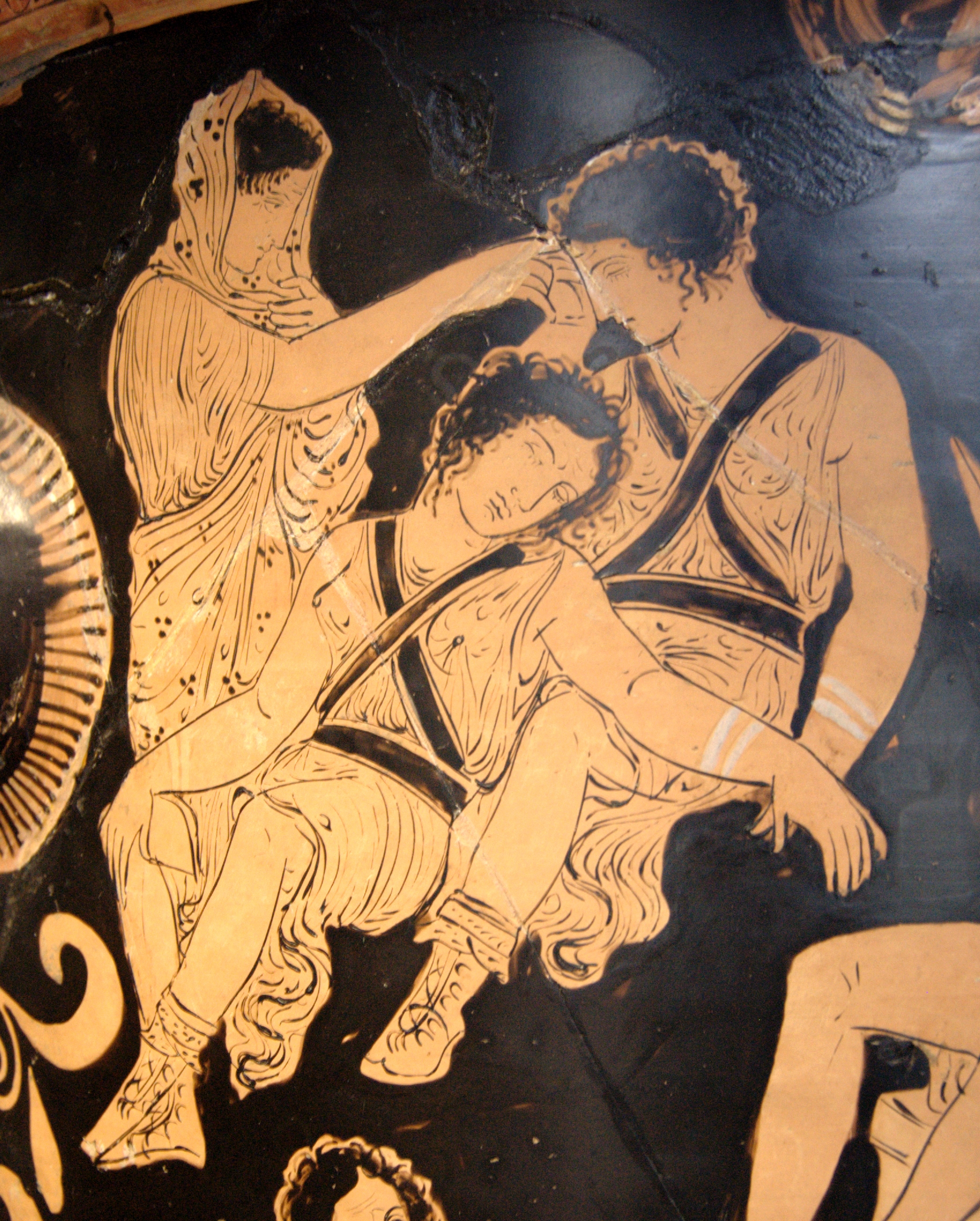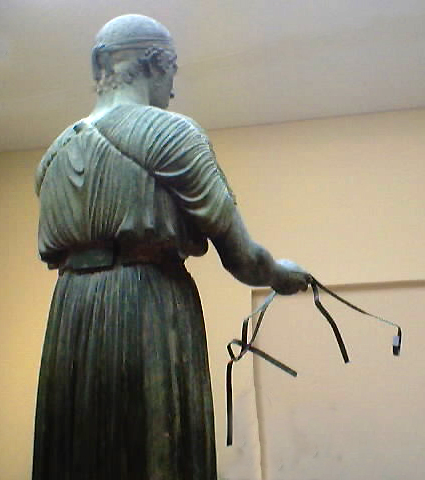|
Vanth
Vanth is a chthonic figure in Etruscan mythology shown in a variety of forms of funerary art, such as in tomb paintings and on sarcophagi. Vanth is a female demon in the Etruscan underworld that is often accompanied either by additional Vanth figures or by another underworld demon, Charun (later referred to as ''Charu''). Both Vanth and Charun are only seen in iconography beginning c. 400 BC, in the middle period of Etruscan art, although some earlier inscriptions mention her name. Vanth has no direct counterpart in Greek mythology, and is very frequently, but not always, seen winged. Although Vanth has no real Greek counterpart, she has been compared to the Greek Furies, the Erinyes, especially in older publications. This is an unlikely association since she is almost always shown in Etruscan iconography to be a benevolent guide, not an avenging spirit, which the Furies often represent. Her other attributes include the possession of a torch, key, or scroll, and she is shown o ... [...More Info...] [...Related Items...] OR: [Wikipedia] [Google] [Baidu] |
Vanth (moon)
Vanth, full designation , is the single known natural satellite of the plutino and likely dwarf planet 90482 Orcus. With a diameter of about 440 km, it is half the size of Orcus and probably the third-largest known moon of a known trans-Neptunian object, after Pluto I Charon and Eris I Dysnomia, though it is possible that the poorly resolved Varda I Ilmarë or Haumea I Hiiaka might be comparable in size. Vanth was discovered by Michael Brown and T.-A. Suer using discovery images taken by the Hubble Space Telescope on 13 November 2005. The discovery was announced in an IAU Circular notice published on 22 February 2007. Using observations with the Hubble Space Telescope from 13 November 2005, Michael Brown and T. A. Suer detected a natural satellite. The discovery of a satellite of Orcus was reported in an IAU Circular notice published on 22 February 2007. The satellite was given the designation S/2005 (90482) 1 before later being named ''Vanth''. It orbits Orcus in a near ... [...More Info...] [...Related Items...] OR: [Wikipedia] [Google] [Baidu] |
90482 Orcus
Orcus (minor-planet designation 90482 Orcus, provisional designation ) is a trans-Neptunian object, trans-Neptunian dwarf planet with a large moon, Vanth (moon), Vanth. It has a diameter of . The surface of Orcus is relatively bright with albedo reaching 23 percent, neutral in color and rich in water ice. The ice is predominantly in crystalline form, which may be related to past cryovolcanic activity. Other compounds like methane or ammonia may also be present on its surface. Orcus was discovered by American astronomers Michael E. Brown, Michael Brown, Chad Trujillo, and David L. Rabinowitz, David Rabinowitz on 17 February 2004. Orcus is a plutino, a trans-Neptunian object that is locked in a 2:3 resonance with the ice giant Neptune, making two revolutions around the Sun to every three of Neptune's. This is much like Pluto, except that the Phase (waves)#Phase difference, phase of Orcus's orbit is opposite to Pluto's: Orcus is at aphelion (most recently in 2019) around when Pluto ... [...More Info...] [...Related Items...] OR: [Wikipedia] [Google] [Baidu] |
Vanth
Vanth is a chthonic figure in Etruscan mythology shown in a variety of forms of funerary art, such as in tomb paintings and on sarcophagi. Vanth is a female demon in the Etruscan underworld that is often accompanied either by additional Vanth figures or by another underworld demon, Charun (later referred to as ''Charu''). Both Vanth and Charun are only seen in iconography beginning c. 400 BC, in the middle period of Etruscan art, although some earlier inscriptions mention her name. Vanth has no direct counterpart in Greek mythology, and is very frequently, but not always, seen winged. Although Vanth has no real Greek counterpart, she has been compared to the Greek Furies, the Erinyes, especially in older publications. This is an unlikely association since she is almost always shown in Etruscan iconography to be a benevolent guide, not an avenging spirit, which the Furies often represent. Her other attributes include the possession of a torch, key, or scroll, and she is shown o ... [...More Info...] [...Related Items...] OR: [Wikipedia] [Google] [Baidu] |
Charun
In Etruscan mythology, Charun (also spelled Charu, or Karun) acted as one of the psychopompoi of the underworld (not to be confused with the god of the underworld, known to the Etruscans as Aita). He is often portrayed with Vanth, a winged figure also associated with the underworld. Origins His name was imported from Greek Charon, although it is uncertain whether Etruscans had a native name for a god of the underworld before this. As suggested by alternations in the Etruscan language such as ''θu'' "one" changing to ''θunśna'' "first", ''lev'' "lion" (from Greek leōn) and ''Apulu'' (from Greek ''Apóllōn''), words ending in ''-n'' after ''u'' were disappearing from the language which is why we see his name spelled ''Xarun'' and later ''Xaru''. Appearance The Etruscan Charun was fundamentally different from his Greek counterpart. Guarding the entry to the underworld he is depicted with a hammer (his religious symbol) and is shown with pointed ears, snakes around his arms, ... [...More Info...] [...Related Items...] OR: [Wikipedia] [Google] [Baidu] |
Culsu
This is a list of deities and legendary figures found in Etruscan mythology. The names below were taken mainly from Etruscan "picture bilinguals", which are Etruscan call-outs on art depicting mythological scenes or motifs. Several different media provide names. Variants of the names are given, reflecting differences in language in different localities and times. Many of the names are Etruscan spellings (and pronunciations) of Greek names. The themes may or may not be entirely Greek. Etruscans frequently added their own themes to Greek myths. The same may be said of native Italic names rendered into Etruscan. Some names are entirely Etruscan, which is often a topic of debate in the international forum of scholarship. Deities Deified mortals Spirits, demons, and other creatures Places Mortals See also * Etruscan mythology * List of Etruscan names for Greek heroes * ''Interpretatio graeca'' Notes References * * * Translated by Wendy Doniger, Gerald Honigsblum. * * ... [...More Info...] [...Related Items...] OR: [Wikipedia] [Google] [Baidu] |
Psychopompos
Psychopomps (from the Greek word , , literally meaning the 'guide of souls') are supernatural creatures, spirits, entities, angels, demons or deities in many religions whose responsibility is to escort newly deceased souls from Earth to the afterlife. Their role is not to judge the deceased, but simply to guide them. Appearing frequently on funerary art, psychopomps have been depicted at different times and in different cultures as anthropomorphic entities, horses, deer, dogs, whip-poor-wills, ravens, crows, vultures, owls, sparrows, and cuckoos. In the case of birds, these are often seen in huge masses, waiting outside the home of the dying. Overview Ancient religion Classical examples of a psychopomp are the ancient Egyptian god Anubis, the deity Yama in Hinduism, the Greek ferryman Charon, the goddess Hecate, and god Hermes, the Roman god Mercury, the Norse Valkyries, the Aztec Xolotl, Slavic Morana and the Etruscan Vanth. Modern religion Heibai Wuchang, literally "Bla ... [...More Info...] [...Related Items...] OR: [Wikipedia] [Google] [Baidu] |
Underworld Goddesses
The underworld, also known as the netherworld or hell, is the supernatural world of the dead in various religious traditions and myths, located below the world of the living. Chthonic is the technical adjective for things of the underworld. The concept of an underworld is found in almost every civilization and "may be as old as humanity itself". Common features of underworld myths are accounts of living people making journeys to the underworld, often for some heroic purpose. Other myths reinforce traditions that entrance of souls to the underworld requires a proper observation of ceremony, such as the ancient Greek story of the recently dead Patroclus haunting Achilles until his body could be properly buried for this purpose. Persons having social status were dressed and equipped in order to better navigate the underworld. A number of mythologies incorporate the concept of the soul of the deceased making its own journey to the underworld, with the dead needing to be taken a ... [...More Info...] [...Related Items...] OR: [Wikipedia] [Google] [Baidu] |
Funerary Art
Funerary art is any work of art forming, or placed in, a repository for the remains of the dead. The term encompasses a wide variety of forms, including cenotaphs ("empty tombs"), tomb-like monuments which do not contain human remains, and communal memorials to the dead, such as war memorials, which may or may not contain remains, and a range of prehistoric megalithic constructs. Funerary art may serve many cultural functions. It can play a role in burial rites, serve as an article for use by the dead in the afterlife, and celebrate the life and accomplishments of the dead, whether as part of kinship-centred practices of ancestor veneration or as a publicly directed dynastic display. It can also function as a reminder of the mortality of humankind, as an expression of cultural values and roles, and help to propitiate the spirits of the dead, maintaining their benevolence and preventing their unwelcome intrusion into the lives of the living. The deposit of objects with an appar ... [...More Info...] [...Related Items...] OR: [Wikipedia] [Google] [Baidu] |
Lexicon Iconographicum Mythologiae Classicae
The ''Lexicon Iconographicum Mythologiae Classicae'' (abbreviated ''LIMC'') is a multivolume encyclopedia cataloguing representations of mythology in the plastic arts of classical antiquity. Published serially from 1981 to 2009, it is the most extensive resource of its kind, providing "full and detailed information." Entries are arranged alphabetically, with black-and-white illustrations indexed to their respective entries. The work was prepared by international scholars from nearly 40 countries who contributed in their language of choice, resulting in entries written variously in English, German, French, or Italian. LIMC also offers a multilingual online database that is updated independently of the print publication. ''LIMC'' has been called an "indispensable research instrument," "monumental," and "magnificent." In the United States The United States of America (U.S.A. or USA), commonly known as the United States (U.S. or US) or America, is a country primarily loca ... [...More Info...] [...Related Items...] OR: [Wikipedia] [Google] [Baidu] |
Erinyes
The Erinyes ( ; sing. Erinys ; grc, Ἐρινύες, pl. of ), also known as the Furies, and the Eumenides, were female chthonic deities of vengeance in ancient Greek religion and mythology. A formulaic oath in the ''Iliad'' invokes them as "the Erinyes, that under earth take vengeance on men, whosoever hath sworn a false oath". Walter Burkert suggests that they are "an embodiment of the act of self-cursing contained in the oath". They correspond to the Dirae in Roman mythology. The Roman writer Maurus Servius Honoratus wrote (ca. 400 AD) that they are called "Eumenides" in hell, "Furiae" on Earth, and "Dirae" in heaven. Erinyes are akin to some other Greek deities, called Poenai. According to Hesiod's ''Theogony'', when the Titan Cronus castrated his father, Uranus, and threw his genitalia into the sea, the Erinyes (along with the Giants and the Meliae) emerged from the drops of blood which fell on the Earth ( Gaia), while Aphrodite was born from the crests of sea ... [...More Info...] [...Related Items...] OR: [Wikipedia] [Google] [Baidu] |
Chiton (costume)
A chiton (Greek: χιτών, ''khitōn'') is a form of tunic that fastens at the shoulder, worn by men and women of ancient Greece and Rome. There are two forms of chiton. One is the Doric chiton and the later Ionic chiton. According to Herodotus, popular legend was that Athenian women began to wear the chiton as opposed to the peplos after several women stabbed a messenger to death with the bronze pins characteristic of the peplos. Etymology The word ''chiton'' is derived from a Central Semitic language *''kittan'' (e.g. Hebrew כֻּתֹּנֶת ''kuttṓnĕṯ''), ultimately from a word for flax. Different forms and wearing styles A shorter version of the chiton was called the chitoniskos. Doric chiton The Doric chiton is a single rectangle of woolen or linen fabric. It can be worn plain or with an overfold called an ''apoptygma'', which is more common to women. It can be draped and fastened at the shoulder by pins (Greek: peronai; Latin: fibulae) or sewing, or by button ... [...More Info...] [...Related Items...] OR: [Wikipedia] [Google] [Baidu] |
Trojan War Cycle
The Epic Cycle ( grc, Ἐπικὸς Κύκλος, Epikòs Kýklos) was a collection of Ancient Greek epic poems, composed in dactylic hexameter and related to the story of the Trojan War, including the ''Cypria'', the ''Aethiopis'', the so-called ''Little Iliad'', the ''Iliupersis'', the ''Nostoi'', and the ''Telegony''. Scholars sometimes include the two Homeric epics, the ''Iliad'' and the ''Odyssey'', among the poems of the Epic Cycle, but the term is more often used to specify the non-Homeric poems as distinct from the Homeric ones. Unlike the ''Iliad'' and the ''Odyssey'', the cyclic epics survive only in fragments and summaries from Late Antiquity and the Byzantine period. The Epic Cycle was the distillation in literary form of an oral tradition that had developed during the Greek Dark Age, which was based in part on localised hero cults. The traditional material from which the literary epics were drawn treats Mycenaean Bronze Age culture from the perspective of Iron Ag ... [...More Info...] [...Related Items...] OR: [Wikipedia] [Google] [Baidu] |





